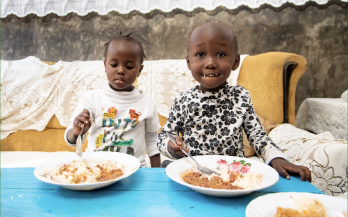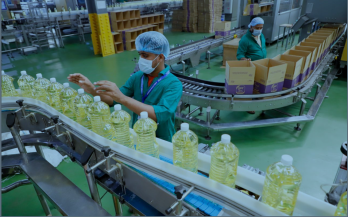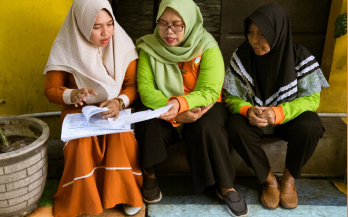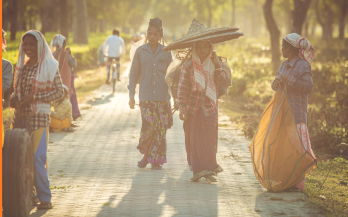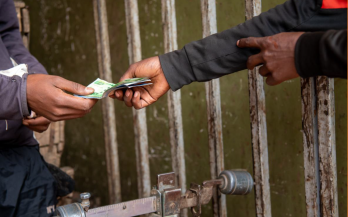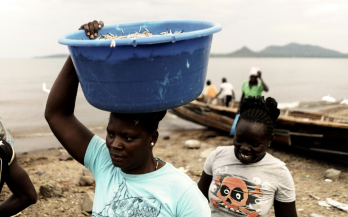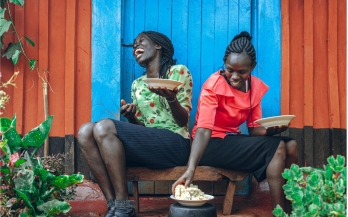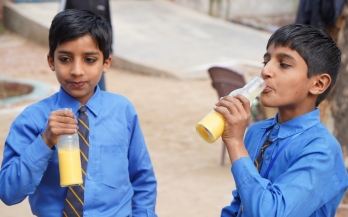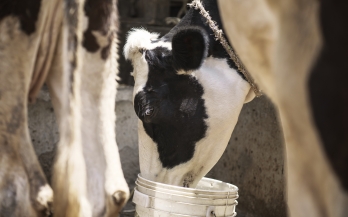Stunting and overweight in children under five years of age remain major malnutrition
challenges in the 12 countries in Africa and Asia where GAIN operates: Bangladesh, Benin,
Ethiopia, India, Indonesia, Kenya, Mozambique, Nigeria, Pakistan, Rwanda, Tanzania, and
Uganda. These forms of malnutrition appear in two of the six Global Nutrition Targets of
the World Health Assembly (WHA), which are meant to be achieved by 2025. This paper
evaluates progress towards these two WHA goals in these 12 countries, identifies lessons
learned, and offers actionable insights for evidence-based policymaking.
The Global Alliance for Improved Nutrition (GAIN) and Wellspring Development designed and hosted a series of in-person and online consultations with partners of the Dutch Ministry of Foreign Affairs to examine challenges in improving the quality of diets of population groups living in rural areas of Low and Lower-Middle Income countries. These groups still largely consume nutrient-inadequate, even unhealthy, diets and face heavy burdens of malnutrition. This sixth and final paper considers how to recognise and manage trade-offs that inevitably emerge in large scale programmes. The discussions focused on how to identify when trade-offs occur and possible ways of addressing these
The Global Alliance for Improved Nutrition (GAIN) and Wellspring Development designed and hosted a series of in-person and online consultations with partners of the Dutch Ministry of Foreign Affairs to examine challenges in improving the quality of diets of population groups living in rural areas of Low and Lower-Middle Income countries. These groups still largely consume nutrient-inadequate, even unhealthy, diets and face heavy burdens of malnutrition. This fifth paper, out of six, looks specifically at the challenges in managing complex programme comprising multiple components, as well as the roles played by external actors in programme success and how best to manage this. The aim of the discussions was to elaborate on the definitions of coordination and orchestration, gather examples where these have been done successfully and to understan
The Global Alliance for Improved Nutrition (GAIN) and Wellspring Development designed and hosted a series of in-person and online consultations with partners of the Dutch Ministry of Foreign Affairs to examine challenges in improved the quality of the diets of population groups living in rural areas of Low and Lower-Middle Income countries. These groups still largely consume unhealthy or even nutrient inadequate diets and face heavy burdens of malnutrition. This fourth paper looks specifically at the challenges of delivering impact at scale. The aim of the discussions was to gather examples of successful project interventions, to understand the decision processes of different organisations,
The Global Alliance for Improved Nutrition (GAIN) and Wellspring Development designed and hosted a series of in-person and online consultations with partners of the Dutch Ministry of Foreign Affairs to examine challenges in improving the quality of diets of population groups living in rural areas of Low and Lower-Middle Income countries. These groups still largely consume nutrient-inadequate, even unhealthy, diets and face heavy burdens of malnutrition. This third paper out of six, looks specifically at the role of markets in improving nutrition at scale. The aim of the discussions was to gather examples of projects that have delivered success at scale, to understand the challenges involved and to identify important points of convergence in conceptualisation and action in future work.
The Global Alliance for Improved Nutrition (GAIN) and Wellspring Development designed and hosted a series of in-person and online consultations with partners of the Dutch Ministry of Foreign Affairs to examine challenges in improving the quality of diets of population groups living in rural areas of Low and Lower-Middle Income countries. These groups largely consume nutrient-inadequate, even unhealthy, diets and face heavy burdens of malnutrition. This second paper, out of six, looks specifically at the challenges of defining and understanding different groups of rural populations. The aim of the discussions was to explore a range of approaches used in defining segments and implications of chosen segments for programme design to help the organisations involved understand how to incorporate these ideas in future work. The bulk of the discussion reflected in this paper is from an online meeting held on 30 September 2024, with the participation of the Dutch Ministry of Foreign Affairs, Bopinc, CARE Netherlands, East-West Seeds, GIZ, the Netherlands Food Partnership, One Acre Fund, and the Wageningen Centre for Development Innovation.
The Global Alliance for Improved Nutrition (GAIN) and Wellspring Development designed
and hosted a series of in-person and online consultations with partners of the Dutch
Ministry of Foreign Affairs to examine challenges in improving the quality of diets of
population groups living in rural areas of low- and lower-middle-income countries. These
groups largely consume nutrient-inadequate, even unhealthy, diets and face heavy
burdens of malnutrition. This first paper, out of six, looks specifically at the challenges of
setting targets for dietary quality improvement. The aim of the discussions was to gather
examples of successful project interventions at scale, to understand the decision
processes of different organisations, and to identify important points of convergence in
conceptualisation and action.
Improving the quality of diets for rural populations is a key priority for many organisations – such as donors, implementing NGOs, and governments – in the nutrition sector. However, success at scale has been elusive.
GAIN, with the support of the Dutch Ministry of Foreign Affairs, embarked on a project to improve understanding of how to succeed at scale in rural settings. Eight other organisations (see background) also joined in this effort to pool their knowledge and experiences. Wellspring carried out a literature review in April-May 2024 and facilitated an in-person workshop in Utrecht in May 2024. This was followed by six online calls that focused on deeper discussion on six key topics identified based on the learning until then: dietary quality; segmentation; markets; scale; orchestration; and trade-offs.
Each topic has been covered under a separate GAIN convening paper. This overview aims to provide a short summary of each of the six topics.
Whey to Value: Effective Whey management practices can boost dairy business and reduce environmental footprint.
Livestock is a major contributor to Pakistan's agricultural economy with a steady growth driven by pricing, demand, and innovation. The market has grown by 3.89% in the fiscal year 2023–2024 , accounting for roughly 60.84% of the value contributed to agriculture and making up a hefty 14.63% of the nation's GDP during FY2024 .
Dairy products are rich in many nutrients essential for healthy growth and development, and they are often more affordable than other animal-source foods. Ethiopia has a very large stock of dairy animals, and milk and other dairy products are popular in the local food culture. Yet the per capita consumption of dairy is surprisingly low, reflecting numerous challenges in production, distribution, and household behaviours. This Working Paper reviews the experience of GAIN Ethiopia tackling some of these challenges in the dairy value chain.
